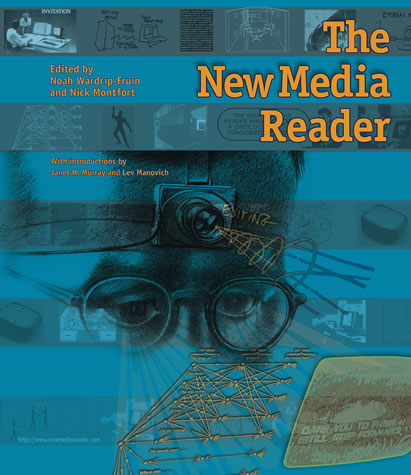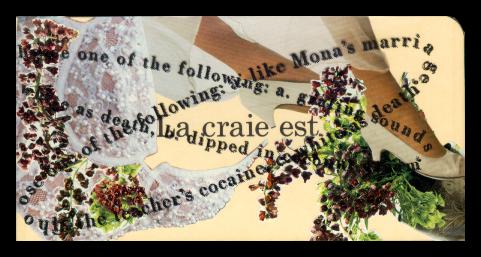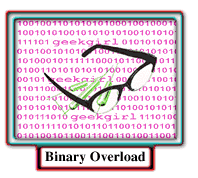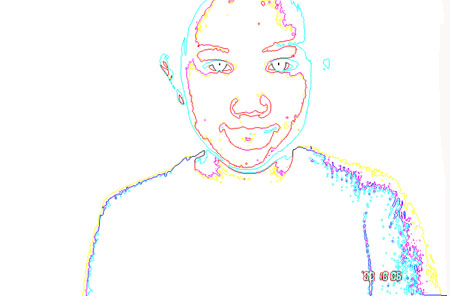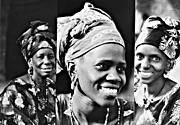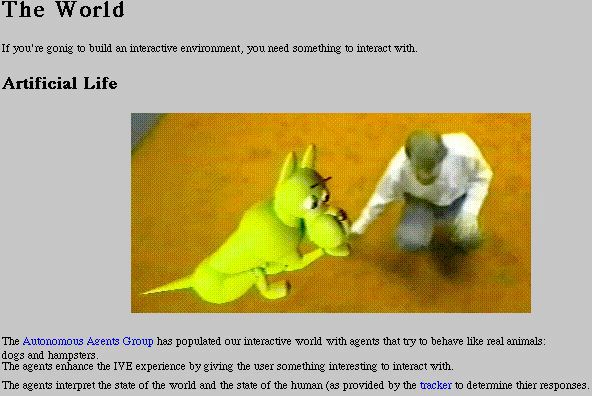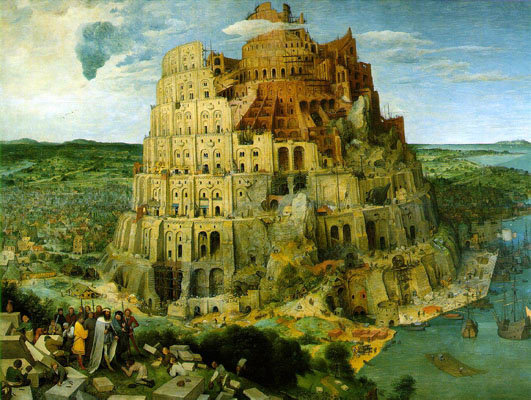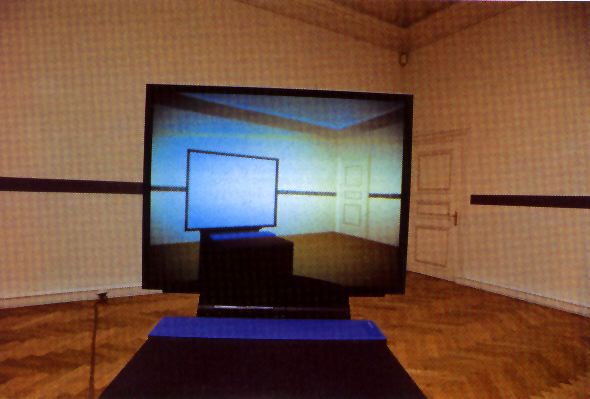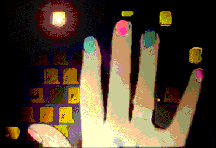F/W 2003-2004 PREREQUISITE: FACS 3930 6.0 or permission of the instructor Dr.
Caitlin Fisher Course
meets: Fridays
In this course we will explore resonances between multimedia practices and contemporary cultural theories in an effort to push the limits of our understanding of both. Aspects of digital multimedia have been theorized variously as the 'concretization of poststructuralist theory', as sometimes 'readerly'/sometimes 'writerly' and 'ergodic' texts, and understood as cinematic, performative and architectural. What does all that mean? In this course you will find out. Together we will explore these claims through encounters with print and electronic texts, both as readers and as practitioners of new media. In the lab, we will test the intellectual and creative use of digital tools and discover ways to use digital media to advance our understanding of theoretical concepts tackled in the seminar. Students are encouraged to work across media and will be guided through the creation of highly conceptualized multimedia projects that demonstrate an understanding of both cultural theory and electronic artmaking, and a response in your own voice to the question 'how do digital technologies interact with artistic practice in the exploration of ideas? This course will encourage -
understanding of a broad range of cultural theories at an advanced undergraduate
level How the class is structured The first section of each class will be devoted to lecture/seminar. Lab periods will be devoted to demonstrations of techniques, critiques of student work, and hands-on instruction. You will have time during the labs, of course, to work on assignments. Some meetings may be dedicated to viewing local exhibitions or presentations by digital arts professionals if opportunities present themselves over the course of the year. REQUIRED TEXTS
1. The New Media Reader edited by Noah Wardrip-Fruin and Nick Montfort MIT Press 2003, isbn: 0262232278 (available
in the York Bookstore) From
the book jacket: The new media field has been developing for more
than 50 years. This
reader collects the texts, videos, and computer programsmany of
them now almost impossible to findthat chronicle the history and
form the foundation of this still-emerging field. The
texts are from computer scientists, artists, architects, literary
writers, interface designers, cultural critics, and individuals working
across disciplines. They were originally published between World
War II (when digital computing, cybernetic feedback, and early notions
of hypertext and the Internet first appeared) and the emergence of
the World Wide Web (when these concepts entered the mainstream of
public life). The CD accompanying the book contains examples
of early games, digital art, independent literary efforts, software created
at universities, and home-computer commercial software. Also on the CD is
digitized video, documenting new media programs and artwork for which no
operational version exists. 2.
e-kit. In addition, a large number of required texts for this course
(both theoretical texts and multimedia texts/web art projects) are
available online and can be accessed through the course web page: www.yorku.ca/caitlin/4930 Suggested
3. Scott McCloud Understanding Comics, NY: HarperPerennial, 1993. 4. Recent reference books on Photoshop, Premiere, Director and Flash. COMPUTER REQUIREMENTS Information about your accounts for this course, including server space and ftp information will be made available in class. Lab
User Fee ASSIGNMENTS Due date In-class participation, listserv 15% Ongoing Art blog 10% ongoing First term production mini-assignments 5% Oct 10 10% Nov 28 Lab Presentation (may be done in pairs) 10% Various Seminar presentation (may be done in pairs) 10% Various Show and tell: 5% Various Final Project Proposal 10% Jan 23 Final Project 25% Apr 2 GROUND RULES This syllabus lays out deadlines for
assignments clearly, and the seminar presentation allows you to choose
your own deadline. If any of these dates pose a problem for you,
please consult me well in advance to negotiate a different due date.
Exceptions can be made for reasons of domestic affliction or illness,
with proper documentation; otherwise, work must be turned in on time. A note on participation: being part of an intellectual community means attending class regularly and punctually, reading thoughtfully in advance and involving yourself in class discussions in a way that enables you and other students to learn. Participation: 20% 1.
In class participation. See 'groundrules', above. Art
Blog 10% Class or Lab Presentation 10% Students
will be responsible for: Show
and Tell 5% 1st term mini-assignments 15%: There will be a choice of several short‑term production assignments linked to demonstrations of new software or techniques/theoretical discussions of artistic approaches. We will share these projects in the seminar and on our web site. More information will be given in class. Final
Project, Final Project Proposal, Proposal Presentation 35% (10% proposal and presentation +25%) Academic
Honesty: Seminar Schedule
purchase text from bookstore explore Multimedia:
from Wagner to Virtual Reality < www.artmuseum.net> and TimeStream: A History
of Media the first work of net art commissioned by New York's Museum
of Modern Art -- allows visitors to explore such varied topics as
ancient Egyptian modes of communication, the camera obscura, cathode-ray
tubes, and X-ray devices -- a loose history of media. Week 2 September 19 Janet
H. Murray [if you can't get the textbook in time there is a version
of these chapters online -- online version is excerpt] New Media from Borges to HTML (New Media Reader) Lev
Manovich [if you can't
get the textbook in time there is a version of these chapters online
-- online version is excerpt] Explore the following website: Ars Electronica considered
one of the world's premier showcases of new media art. "'One
never sees a new art,'
someone once wrote about new media. 'A 'new art,' may be recognized
by the fact that it is not recognized.' And so the story goes with
the Ars Electronica Festival, an annual celebration of all things
new in the field of art and technology, some easy to recognize and
others not so." Alex Galloway's 'Rhizome'
commentary on Ars Electronica 2001. show
and tell: fineart forum CD
Week 3 September 26th
Ch 49. The End of Books Ch 42. Siren Shapes: Exploratory and Constructive Hypertexts New Media Reader CDROM: Writing on the Edge by
various authors. 1991. The
Spring 1991 issue included this special section, edited by Stuart
Moulthrop, and was bundled
with Storypace hypertexts "Izme Pass" by Carolyn Guyer
and Martha Petry and "WOE" by Michael Joyce, also included. Show
and tell: Figurski at
Findhorn on Acid
Week 4 October3rd
Collagist practices of
knowledge Ch 07. The Cut Up Method of Brion Gysin Christy Sheffield Red Mona Critical
Art Ensemble Utopian Plagiarism, Hypertextuality and Electronic
Cultural production (handout) bending/breaking/building:
the resonance of digital technologies in experimental sound (pdf) As We May Think Vannevar Bush, 1945 (New Media Reader) Manovich, "Database
as a Symbolic Form" (online) Ch 16. A Research Center for Augmenting Human Intellect Suggested
: Vanevar Bush, "Memex
Revisited" (online) First mini assignment
due 5% Show and tell: cdrom:
Michele Schauff memory media Week 6 October 17th I am trying to negotiate
a reduced price for you to attend aoir 4.0 Toronto 2003: broadening the band October 16-19, 2003. You can find out more about the conference
here: http://aoir.org/2003/ ³Though the Internet has become an integral part of the daily existence of many cultures worldwide, we have only begun to understand the ways in which it transforms our interactions, our knowledge, and our selves. Research on the Internet is a growing part of academic work, and it cuts across a wide variety of disciplines. The Association of Internet Researchers (AoIR) was formed out of a recognition of the need to bring together people from diverse academic and cultural perspectives in order to advance collective understanding of the impact of this technology on contemporary life. More about the Conference. The seed sponsors of AoiR Toronto 2003 are Seneca College, the University of Toronto's Knowledge Media Design Institute (KMDI), the Bell University Labs at University of Toronto, the byDesign eLab, and the eCommons/Agora. Week 7 October 24th Reading: "A Thousand Plateaus is a difficult but rewarding book
of radical philosophy ÷ one of the most influential of the late Twentieth
Century. While not concerned with new media technology (the book
was first published in 1980), Deleuze and Guattari clearly forecast
the direction of postmodern techno-culture, innovating several key
philosophical concepts from the Internet-like rhizome to the ever
shifting territories of the nomad. Translator Brian Massumi offers
some advice: "This is a book that speaks of many things, of
ticks and quilts and fuzzy subsets and noology and political economy...
The best way of all to approach the book is to read it as a challenge:
to pry open the vacant spaces that would enable you to build your
life and those of the people around you into a plateau of intensity..." 53. Nomadic Power and Cultural Resistance visit Rhizome.org Suggested:
Moulthrop "Rhizome
and Resistance: Hypertext and the Dreams of a New Culture" (online) Hakim
Bey ãTAZ" (online)
The Act of Reading, Active
Reading. Foucault, "Authors
and Writers" (I will bring copies to class) Barthes, "What is an
Author?" (I will bring copies to class) Ch. 01. The Garden of Forking Paths New media reader CDROM "forking paths" by Stuart Moulthrop. 1987. Complete documentation of
this previously unpublished hypertext fiction, based on Jorge Luis
Borges's story.
Walter Benjamin Arcades Project (online translation) Victor
Burgin the city
in pieces (kit) Show
and tell: Passagen
Week 11 November 21
|
